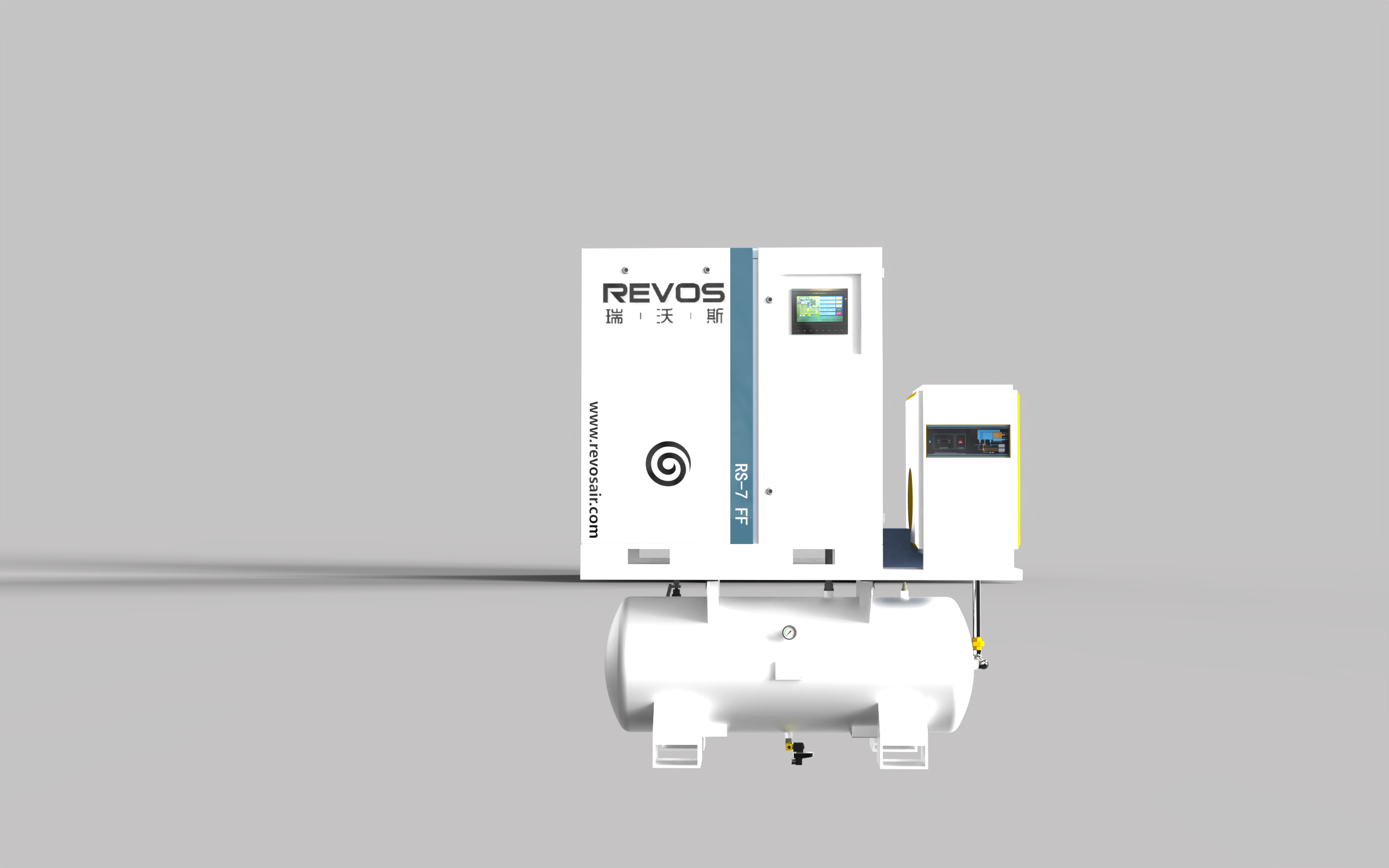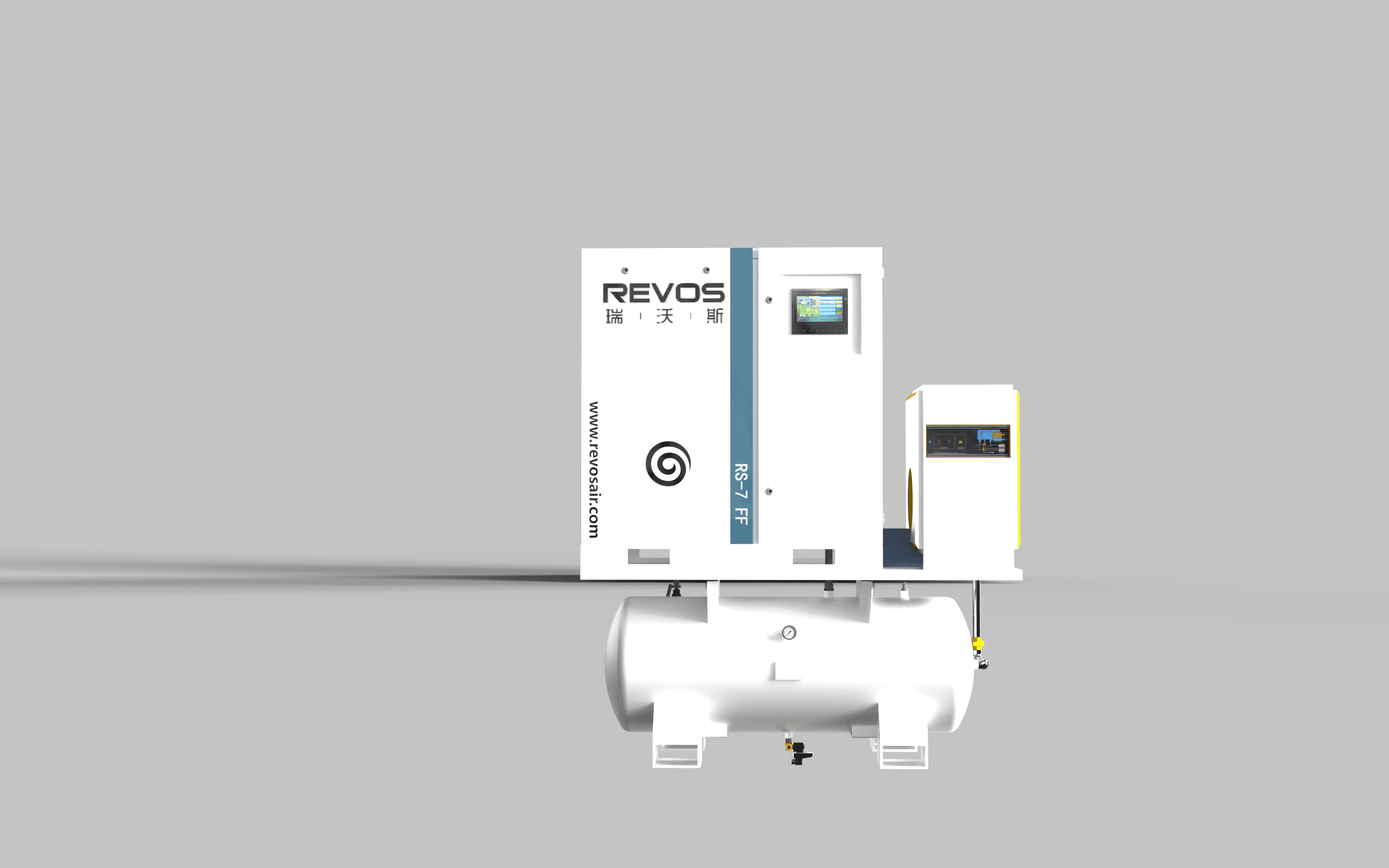In today's competitive industrial landscape, compressed air systems serve as the lifeblood of countless manufacturing and processing operations. Among these systems, scroll type air compressors have emerged as critical assets, particularly where oil-free air is non-negotiable. This authoritative guide synthesizes decades of hands-on industry expertise to provide industrial buyers and maintenance professionals with a systematic troubleshooting methodology specifically tailored to scroll compressor technology. By implementing the diagnostic approaches and maintenance strategies outlined here, organizations can significantly reduce downtime, optimize performance, and extend equipment lifespan—directly impacting their bottom line and operational efficiency.
Fundamentals of Scroll Compressor Technology
Scroll type air compressors operate on a sophisticated positive displacement principle utilizing two precisely engineered spiral elements: a stationary scroll and an orbiting scroll. This innovative design delivers exceptional advantages over traditional compression technologies, including significantly reduced noise levels, fewer moving components, and consistent pressure delivery. These characteristics make scroll compressors indispensable in applications demanding oil-free air quality, such as pharmaceutical manufacturing, food and beverage processing, electronics production, and medical device manufacturing.

The unique compression architecture of scroll technology creates distinct operational parameters and failure modes that differ substantially from alternative compressor types like screw or reciprocating models. Unlike screw compressors, which employ a rotary tooth compression mechanism with greater tolerance for particulate contamination, scroll compressors maintain extremely precise clearances between their interlocking spiral elements—often measured in thousandths of an inch. This precision engineering necessitates cleaner operating environments, stricter filtration requirements, and more meticulous maintenance protocols to preserve optimal performance and prevent premature failure.
Diagnostic Framework: Common Faults and Resolution Strategies
Electrical System and Motor Malfunctions
Electrical system anomalies account for approximately 35% of documented scroll compressor failures, typically manifesting as failure to start, intermittent operation, or unexpected shutdowns. When addressing electrical issues, begin with systematic voltage verification using calibrated multimeters to confirm supply parameters match the manufacturer's specifications, which are typically indicated on the unit nameplate. Three-phase configurations present a unique challenge with potential reverse rotation scenarios—responsible for nearly 50% of electrical-related operational faults—where the unit runs normally but fails to generate adequate pressure. This condition can be corrected by simply swapping any two power leads.
Insulation integrity testing represents another critical diagnostic procedure. Hipot test results indicating elevated leakage current often signal motor winding degradation, commonly resulting from moisture intrusion or thermal overload. Modern scroll compressor designs increasingly incorporate intelligent diagnostic systems, such as CoreSense technology, which provide specific fault codes to accelerate troubleshooting and reduce diagnostic time.
Mechanical Component Failures
Mechanical issues in scroll compressors frequently stem from improper installation parameters or inadequate maintenance regimens. A particularly destructive condition known as liquid slugging occurs when excessive lubricant or refrigerant enters the compression chamber, creating hydraulic pressure spikes that can crack scroll plates or damage bearing assemblies. Warning signs include abnormal operational sounds, diminished capacity output, and elevated discharge temperatures exceeding manufacturer recommendations.
To accurately diagnose mechanical anomalies, maintenance professionals should implement vibration analysis using precision accelerometers—a standard predictive maintenance practice in contemporary industrial facilities. Abnormal vibration signatures typically indicate misalignment issues or bearing wear progression. Unlike screw compressors that can often operate with minor mechanical imperfections, scroll compressors demand precise alignment of their spiral elements, making vibration analysis an indispensable diagnostic tool for early fault detection.
Thermal Management Challenges
Thermal overload represents a significant failure mechanism in scroll compressors, especially within industrial environments characterized by elevated ambient temperatures. Key indicators of thermal distress include discharge temperatures exceeding 220°F (104°C) and frequent thermal overload trips. Contributing factors often include heat exchanger fouling, inadequate ventilation, refrigerant charge imbalances, or cooling system inefficiencies.
Preventive maintenance protocols should incorporate regular condenser coil cleaning and airflow verification—typically 400-600 CFM per ton of cooling capacity. In 2025, infrared thermography has become an essential predictive maintenance tool, enabling technicians to identify thermal hotspots in compressor components before they escalate into catastrophic failures. Implementing these thermal management practices can extend component life by 30-40% in harsh industrial environments.
Comparative Analysis: Scroll vs. Screw Compressor Technologies
Developing an effective troubleshooting methodology requires understanding the fundamental operational differences between scroll and screw compressor technologies. Scroll compressors generally exhibit higher sensitivity to particulate contamination and liquid ingestion compared to screw compressors, which utilize more robust rotary tooth compression mechanisms and oil injection systems.
| Operational Parameter | Scroll Compressor Characteristics | Screw Compressor Characteristics |
|-----------------------|-----------------------------------|-----------------------------------|
| Particulate Tolerance | Low sensitivity due to tight spiral clearances requiring cleaner operating environments | Higher tolerance due to larger oil-lubricated clearances and inherent filtration properties of oil injection |
| Liquid Handling Capability | Highly susceptible to damage from liquid slugging events | Superior tolerance with proper oil injection and separation systems |
| Vibration Profile | Lower baseline vibration levels; abnormal patterns typically indicate serious mechanical issues | Higher normal vibration signatures; gradual changes usually signal developing problems |
| Maintenance Accessibility | Compact design may restrict component access in some configurations | Larger footprint generally allows easier access to critical components |
| Efficiency Degradation | Often exhibits abrupt performance drops when internal damage occurs | Typically demonstrates gradual efficiency loss as components wear |
These technological distinctions necessitate different troubleshooting approaches. For instance, pressure differential monitoring across filtration systems assumes greater importance for scroll compressors, while oil analysis represents a more critical diagnostic tool for assessing screw compressor health.
Proactive Maintenance Strategies for Enhanced Reliability
Implementing a structured preventive maintenance program represents the most effective strategy for maximizing scroll compressor reliability and minimizing unplanned downtime. Based on 2025 industry standards and manufacturer recommendations, the following practices have demonstrated effectiveness in extending equipment service life:
Comprehensive Inspection Regimens
Establish a tiered maintenance schedule incorporating daily pressure and temperature monitoring, weekly filter condition assessments, and monthly electrical connection torque verification. Quarterly activities should include detailed vibration analysis and thermal imaging surveys, while annual maintenance should feature comprehensive bearing condition evaluation and seal integrity testing. Documentation of all inspection findings creates a valuable historical record that supports trend analysis and predictive maintenance initiatives.
Lubrication Management Protocols
For oil-injected scroll models, implement rigorous oil analysis programs at 2,000-hour intervals to monitor contamination levels and additive depletion. Oil-free variants require specialized maintenance focus on airend cooling systems, seal integrity verification, and periodic vacuum testing to ensure air quality compliance. Regardless of lubrication type, maintaining strict adherence to manufacturer-recommended lubricant specifications is critical for preventing premature component failure.
Environmental Control Measures
Optimal scroll compressor performance requires maintaining ambient temperatures within the 40-100°F (4-38°C) range with adequate ventilation. In particulate-laden environments, upgrading to HEPA filtration systems has been shown to reduce maintenance requirements by up to 40% in manufacturing settings. Additionally, implementing proper airflow management around compressor installations can reduce operating temperatures by 5-10°F, significantly extending component life expectancy.
Digital Monitoring Integration
The industrial maintenance landscape in 2025 increasingly leverages smart monitoring technologies to enhance reliability. Wireless sensor networks enable continuous tracking of critical operating parameters, providing early warning of developing issues before they result in unplanned downtime. When properly configured and calibrated, predictive maintenance algorithms have demonstrated the ability to reduce unplanned compressor downtime by up to 35% while simultaneously optimizing energy consumption.
Industry-Specific Troubleshooting Considerations
Pharmaceutical and Healthcare Applications
Within pharmaceutical manufacturing environments where Class 0 oil-free compressors are standard equipment, compressed air quality directly impacts product safety and regulatory compliance. Troubleshooting in these critical environments requires specialized protocols to maintain ISO 8573-1 Class 0 certification while minimizing production interruptions. Common challenges include accelerated filter clogging from high particulate loads in cleanroom environments and pressure fluctuations during batch processing transitions.
Diagnostic procedures must incorporate regular air quality testing using calibrated portable particle counters and continuous dew point monitoring. Unlike general industrial applications, pharmaceutical facilities typically employ redundant compressed air systems, making isolation procedures during troubleshooting more complex but essential for maintaining continuous operation and product integrity.
Food and Beverage Processing Facilities
Food industry applications present unique operational challenges, including washdown environments, strict hygiene requirements, and regulatory compliance mandates. Corrosion resulting from moisture exposure represents a primary failure mechanism, necessitating specialized inspection techniques. Ultrasonic testing has emerged as an invaluable tool for detecting early-stage corrosion in scroll compressor casings and components that may not be visible during standard visual inspections.
Additionally, compressed air purity standards in food processing require regular testing and monitoring to prevent product contamination. Troubleshooting approaches must account for these stringent quality requirements while minimizing production disruptions in typically high-throughput environments.
Electronics Manufacturing Operations
The electronics manufacturing sector demands extremely dry compressed air with dew points as low as -40°F (-40°C) to prevent electrostatic discharge and component damage. Troubleshooting in these precision environments frequently centers on dew point monitoring and desiccant dryer performance verification. Recent innovations in sensor technology now allow for continuous dew point tracking within the compressor package itself, providing immediate alerts to moisture issues that could potentially damage sensitive electronic components during production.
Emerging Trends Reshaping Scroll Compressor Maintenance
The field of scroll compressor maintenance continues to evolve rapidly with technological advancements. Several key trends are transforming troubleshooting practices in 2025 and beyond:
Digital Twin Implementation
Leading manufacturers are developing sophisticated digital replicas of compressor systems that mirror real-time operating conditions. These digital twins enable virtual troubleshooting, allowing maintenance professionals to test potential solutions in a simulated environment before implementing them on physical equipment. Early adopter facilities have reported downtime reductions of up to 25% through the strategic implementation of this technology.
Artificial Intelligence-Driven Diagnostics
Advanced AI algorithms are becoming increasingly proficient at analyzing operational data patterns to predict impending failures. These intelligent systems can identify subtle changes across multiple sensor inputs that might elude human technicians. Industry projections indicate that by 2025, approximately 30% of industrial scroll compressors will incorporate some level of AI-based condition monitoring, representing a significant shift in predictive maintenance capabilities.
Advanced Material Science Applications
Innovative composite materials for scroll element fabrication are simultaneously increasing durability and reducing weight. These advanced materials demonstrate superior resistance to thermal cycling and chemical exposure, potentially extending maintenance intervals by 50% compared to traditional aluminum alloys. When troubleshooting these newer generation units, maintenance professionals must adjust their diagnostic criteria for acceptable wear patterns and performance degradation.
Strategic Recommendations for Maintenance and Procurement Professionals
Effective troubleshooting of scroll type air compressors demands a systematic approach that combines technical knowledge with practical experience. Based on current industry best practices and cutting-edge diagnostic techniques, maintenance professionals should:
- Implement structured troubleshooting protocols that prioritize electrical system evaluation before progressing to mechanical components
- Utilize advanced diagnostic instrumentation including vibration analyzers, thermal imagers, and ultrasonic detectors as standard practice
- Develop comprehensive maintenance schedules tailored to specific industry requirements and operational environments
- Leverage digital monitoring technologies for continuous condition assessment and early fault detection
- Establish rigorous documentation procedures for all troubleshooting activities to build institutional knowledge and identify recurring issues
For industrial procurement professionals evaluating compressed air solutions, the reliability characteristics and maintenance requirements of scroll compressors should factor significantly into purchasing decisions. While initial capital costs may exceed those of alternative technologies, the total cost of ownership often proves favorable in applications demanding oil-free air and consistent performance.
As the industrial compressed air sector continues to evolve, staying current with maintenance best practices and technological advancements will be essential for maximizing the performance and longevity of scroll type air compressor systems. By integrating the diagnostic procedures and maintenance strategies outlined in this guide, industrial operations can achieve enhanced reliability, reduced downtime, and optimized energy efficiency from their scroll compressor investments, ultimately contributing to improved bottom-line performance and competitive advantage.
